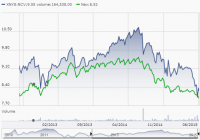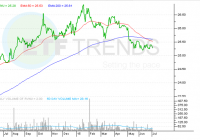Q2 2015 U.S. Equity Fund Performance Summary
By Tom Roseen Despite hitting multiple record highs and triple-digit lows over the three months, the markets were generally in a sideways pattern during second quarter 2015. While the Russell 2000 and the NASDAQ Composite managed to break into record territory in mid-June, advances to new highs were generally just at the margin. However, at June month-end concerns about the Greek debt drama, looming U.S. interest rate increases, Puerto Rico’s inability to service its public debt, and China’s recent market crash weighed heavily on investors. A positive finish for equities on the last trading day of June wasn’t enough to offset the Greek debt-inspired meltdown from the prior day, and many of the major indices witnessed their first quarterly loss in ten, with the Dow Jones Industrial Average and the S&P 500 losing 0.88% and 0.23%, respectively, for Q2, while the NASDAQ Composite gained 1.75%. However, the average equity fund (+0.09%) just managed to stay in the black for Q2, stretching the winning streak to three quarters in a row. For the quarter only 43 of Lipper’s 96 equity and mixed-equity fund classifications posted positive returns. For the second consecutive quarter Lipper’s World Equity Funds macro-classification (+1.22%) was at the top of the leader board, outpacing the other three broad equity groupings. USDE Funds (+0.03%) took the runner-up position for the quarter, followed by Mixed-Asset Funds (-0.66%) and Sector Equity Funds (-1.80%). In total, only 48% of all individual equity and mixed-asset funds posted plus-side returns for the quarter. Lipper’s preliminary Q2 2015 fund-flows numbers showed mutual fund investors were net redeemers of fund assets for the quarter, withdrawing an estimated $35.7 billion from the conventional funds business (excluding exchange-traded funds [ETFs]). During the quarter investors were net redeemers of money market funds (-$47.1 billion), equity funds (-$5.5 billion), and municipal bond funds (-$1.7 billion), but they were net purchasers of taxable fixed income funds (+$18.6 billion). In line with Q1 2015 and despite increasing geopolitical concerns, for Q2 U.S. fund investors favored nondomestic equity funds over domestic equity funds, injecting $34.5 billion versus withdrawing $40.0 billion, respectively. Nevertheless, conventional fund investors continued to show a clear preference for developed-market funds (+$33.9 billion) over emerging-market funds (+$3.4 billion) during the quarter. ETF investors (authorized participants) were net purchasers for Q2 2015, injecting $29.9 billion into equity ETFs while also being net purchasers of taxable fixed income ETFs (+$1.7 billion) and municipal debt ETFs (+$0.6 billion). The Sector Equity Funds macro-group (-1.80% [quarter] and -2.82% [June]) housed four of the five top-performing classifications in the equity universe for the quarter, but couldn’t keep itself out of the red, being once again relegated to the fourth-place spot of Lipper’s four macro-classifications. The macro-classification was dragged down by its also housing the four worst performing classifications in the universe. At the top of the list for the first quarter in 29 the Commodities Energy Funds classification (one of Q1’s laggards) returned 9.27% for the quarter and 0.40% for June. The classification benefitted from a rise in oil and gasoline prices during the quarter. The next best performing classification- Commodities Agriculture Funds (+5.28% for the quarter) benefitted from June’s rally in grain prices. Despite the on-again, off-again nature of the Greek debt drama, a volatile Chinese market, and a resurgence of news surrounding the possible default by Puerto Rico of its sovereign debt, the World Equity Funds macro-classification (+1.22%) remained at the top of the charts for the second consecutive quarter. Fund investors continued to pad the coffers of developed-market funds in our tally of estimated net flows for the quarter, but they also injected net new money into emerging markets-related funds. Despite its late-month meltdown in June, China Region Funds (+7.64%)-for the second quarter in three-outpaced the other classifications in the group for the quarter, followed by Japanese Funds (+3.95%),International Small-/Mid-Cap Growth Funds (+3.91%), and International Small-/Mid-Cap Core Funds (+3.82%). Japanese Funds got a boost from export-related stocks after the yen showed continued weakness against the greenback. India-related securities suffered from volatility at the beginning of June after the Reserve Bank of India revised its inflation forecast higher, pushing India Region Funds (-3.58%) to the bottom of the macro-classification for the first quarter in eight.

